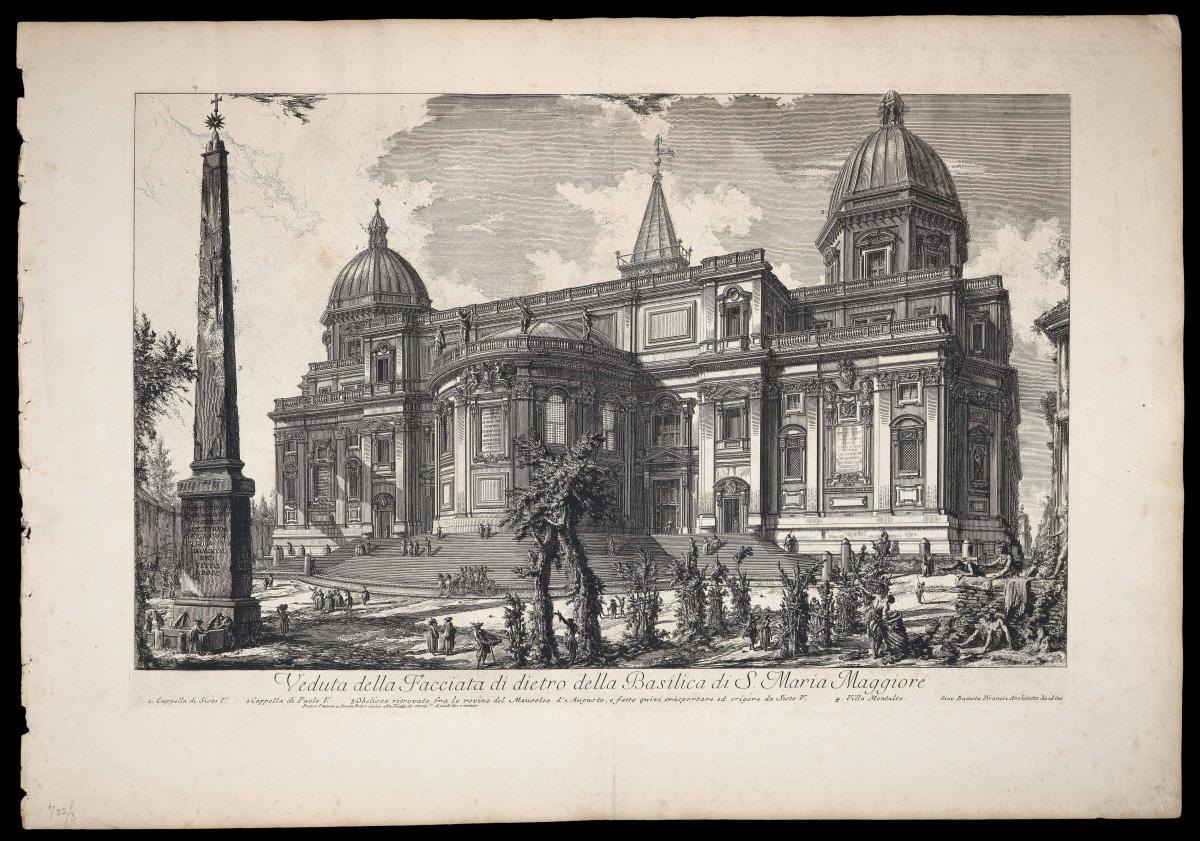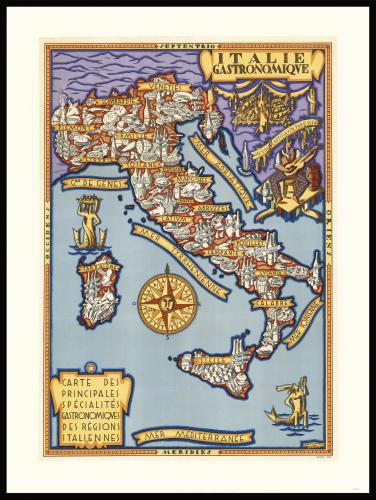

This object is eligible for a Certificate of BADA Provenance
The BADA Standard
- Since 1918, BADA has been the leading association for the antiques and fine art trade
- Members are elected for their knowledge, integrity and quality of stock
- Our clients are protected by BADA’s code of conduct
- Our dealers’ membership is reviewed and renewed annually
- Bada.org is a non-profit site: clients deal directly with members and they pay no hidden fees
Veduta della Facciata di dietro della Basilica di S. Maria Maggiore.
Author: PIRANESI, Giovani Battista
Publication place: [Rome
Publication date: 1742].
Physical description: Second state, etching on thick laid paper with wide margins (image size 612 x 402 mm), watermark of a fleur-de-lys framed within a double circle (Hind watermark #3), left edge with minor tears from stitching and remnants of binder’s glue, margins lightly spotted and toned.
Notes
Giovanni Battista Piranesi (1720–1778) was the premier engraver of 18th century Rome, as highly regarded during his lifetime as he is today. Though born in Venice he moved to Rome in 1740, where he spent much of the rest of his life and career. Rome was more than just his home however – it was also his most faithful subject.
As such, Piranesi produced hundreds of incredibly detailed prints documenting the city’s monuments, both ancient and modern, its landscapes and its inhabitants in his remarkable series of engravings, The Views of Rome.
This is one of three prints by Piranesi showing Sta. Maria Maggiore, a major papal basilica built in the 5th century to honor the Virgin Mary. Piranesi here depicts the basilica’s apsidal facade as seen from the Piazza dell’Esquilino. The monumental baroque exterior of the apse dates to the late 17th century. Pope Clement IX had begun the project of remodeling, appointing Bernini as architect in 1669.
However, his project was cancelled due to the proposed expense, and in 1673 Clement X appointed Carlo Rainaldi to execute a less ambitious, though still monumental, design. A symmetrical Baroque design was put in place by covering the old apse in a new external cladding, thereby leaving the celebrated 13th century mosaic in the apse’s dome untouched.
Piranesi also shows the Esquiline Obelisk, an ancient Roman obelisk found near the site of the Mausoleum of Augustus in 1527 and erected on the Esquiline hill by Pope Sixtus V in 1587. The obelisk and the church are surrounded by a varied cast of Roman characters, from the unsavory to the aristocratic, the hard at work to the leisurely – a common characteristic of Piranesi’s views, providing the viewer with a realistic glimpse into Roman city life.
Provenance:
Private Collection, New York
Bibliography
Hind, 10.2
- Hind, Arthur. (1978). Giovanni Battista Piranesi. London: Holland Press.
Dimensions
520 by 755mm. (20.5 by 29.75 inches)Stock number
12726The BADA Standard
- Since 1918, BADA has been the leading association for the antiques and fine art trade
- Members are elected for their knowledge, integrity and quality of stock
- Our clients are protected by BADA’s code of conduct
- Our dealers’ membership is reviewed and renewed annually
- Bada.org is a non-profit site: clients deal directly with members and they pay no hidden fees




